Identifying Common Sources of Infection in Hospitals
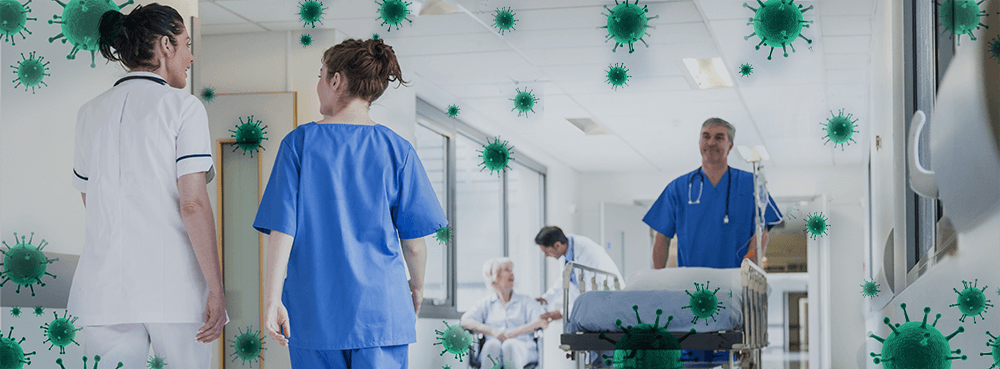
Editor’s note: This blog was originally published in October 2023 and has been completely revamped and updated for accuracy and comprehensiveness.
Where do hospital-acquired infections come from? The obvious answer is hospitals… But what about the most common sources within the healthcare environment?
Hospitals can be breeding grounds for various pathogens, making it vital for all healthcare workers to be well-informed about the transmission risks.
This short guide aims to explore common sources of infection in hospitals and offers practical tips to mitigate these risks. Whether you’re working in infection prevention and control, nursing, leading a department, or portering, you can use this tool to be better equipped for reducing infection risks and creating a safer environment for all.
TOPICS WE WILL COVER:
2 / 12 Common Sources of Infection in Hospitals
3 / What Type of Infection Is Most Common in the UK?
4 / Common Infections in Hospitals (Acquired at the Facility)
5 / Common Bacterial Infections in Hospitals
6 / The Importance of Vigilance in Identifying Common Sources of Infection
7 / Choose Waste management That Minimises Infection Risk
What Are Pathogens?
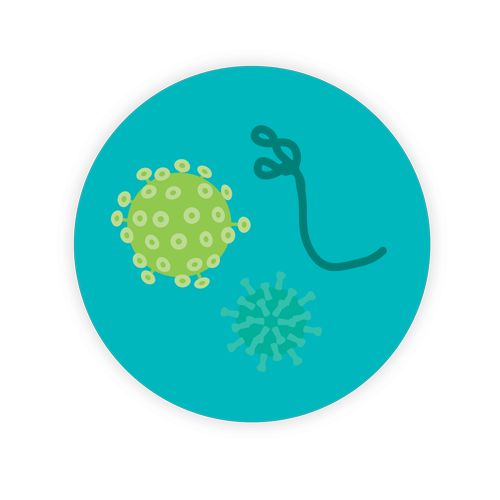 A pathogen is an organism or entity responsible for causing diseases. It’s often referred to as an infectious agent, or in simpler terms, a germ.
A pathogen is an organism or entity responsible for causing diseases. It’s often referred to as an infectious agent, or in simpler terms, a germ.
To survive and thrive, a pathogen requires a host. Once inside the body (the host), a pathogen strategically establishes itself eluding the immune responses and using the body’s resources to reproduce. It then exits the host, seeking a new one to infect.
You could liken it to an uninvited guest who lets themselves into your home. They manage to disarm your security system before getting comfy on your sofa and eating your food. They then invite their friends over and when your home’s in pretty rough shape, they move on to the next door.
The methods of pathogen transmission vary based on the type, it can occur through direct skin contact, bodily fluids, airborne particles, contact with faeces, or by touching surfaces contaminated by an infected individual.
The four most common forms of pathogens are:
12 Common Sources of Infection in Hospitals
It's crucial to identify common sources of infection in hospitals, but that's only half the battle. Healthcare workers must also be well-versed in risk minimisation strategies.
The sad truth about hospitals is that there are MANY sources of infection but when all healthcare workers are on the same page and follow best practices, transmission risks can be minimised. To help in that regard, we've created a non-exhaustive list of the most common sources of infection in hospitals to be aware of.
By familiarising yourself with these, you'll be better equipped to identify poor practices that may lead to the spread of infection. Our goal is to empower you with knowledge, enabling you to spot potential risks and take proactive steps to maintain a safer healthcare environment.
Poor Hand Hygiene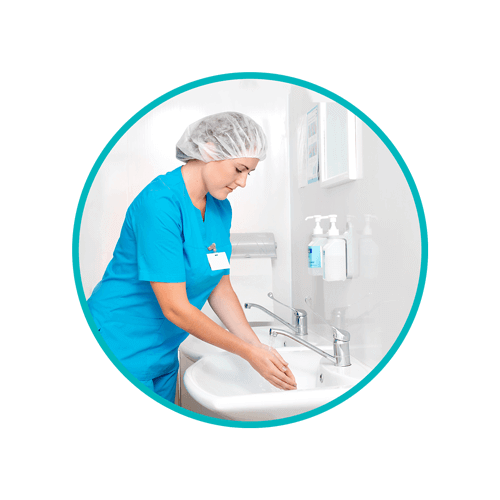
Healthcare workers’ hands have the potential to be one of the biggest sources of infection in hospitals, acting as carriers of infections when proper hand hygiene practices aren’t followed. Regular handwashing with soap and water or using alcohol-based hand sanitisers is crucial in preventing the spread of infections via hands.
Not Cleaning Hospital Surfaces
Beyond inadequate hand hygiene, there are plenty of other poor practices that may lead to the spread of infection. For example, frequently touched surfaces such as doorknobs, bed rails, and countertops can become hotspots for harbouring pathogens – insufficient cleaning and disinfection of contaminated surfaces can lead to the persistence and spread of those pathogens. Regularly disinfect high-touch surfaces to reduce the risk of transmission.
Contaminated Medical Instruments
Improperly sterilised or cleaned medical instruments can harbour harmful pathogens, posing a significant risk to patients during procedures. Ensure strict sterilisation and decontamination protocols are followed where appropriate and the adoption of single-use instruments when necessary.
Inadequate Waste Management
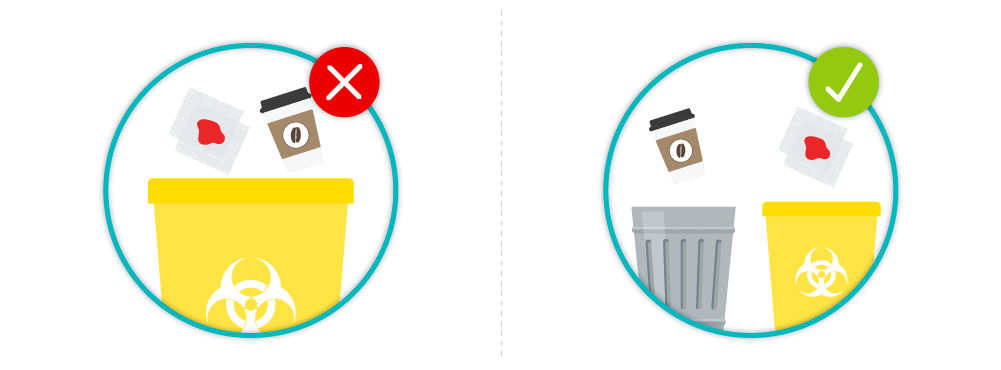
Improper handling and disposal of clinical waste, including incorrect segregation of infectious waste, can contribute to the spread of infections in healthcare settings. Educate staff on the correct and safe management of all healthcare waste.
Not Wearing Sufficient Protective Equipment
Airborne pathogens such as viruses and bacteria can spread through the air in healthcare facilities, especially in areas like isolation rooms or during certain medical procedures. Always wear the appropriate personal protective equipment (PPE) when necessary to protect yourself and others.
Contaminated Food
Foodborne illnesses can spread in healthcare settings if food safety measures are inadequate or aren’t followed. Ensure proper storage, handling, and preparation of food at all times to protect patients and staff.
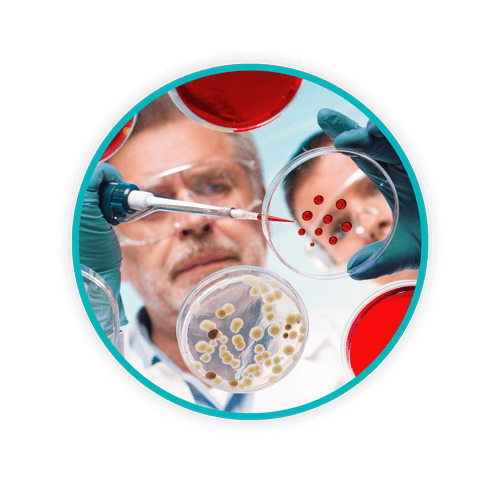
Antibiotic-Resistant Pathogens
The misuse or overuse of antibiotics can lead to the emergence and spread of antibiotic-resistant bacteria, posing a serious threat to patient safety and causing serious infections. Always prescribe antibiotics judiciously and implement antimicrobial stewardship programs.
Improperly Maintained Water Systems
Improperly maintained water systems such as cooling towers and plumbing can harbour Legionella bacteria, leading to the potential for infections like Legionnaires’ disease. Regular maintenance and monitoring of water quality are essential preventive measures.
Poor Patient Isolation Practices
Failing to isolate patients with infectious diseases appropriately can lead to the transmission of pathogens within the hospital setting. Follow isolation protocols diligently to prevent outbreaks.
Visitors Not Adhering to Infection Control Guidelines
Visitors who are unaware of proper hygiene practices can inadvertently introduce pathogens into the hospital and potentially transmit infections to patients. Encourage visitors to adhere to infection control guidelines.
Lack of Proper Training
Inadequate training of healthcare workers in infection prevention and control measures can increase the risk of transmission within the hospital. Regularly update staff with relevant training and guidelines.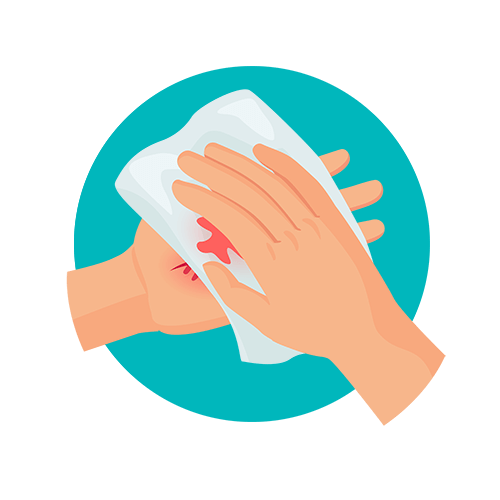
Improper Handling of Sharps
Improper disposal or handling of sharps can lead to injuries among healthcare workers and patients, increasing the risk of infections and exposure to bloodborne pathogens. To prevent injuries and reduce infection risk, introduce safety-engineered devices such as ISO-compliant reusable sharps containers.
What Type of Infection is Most Common in the UK?
In the UK, some of the most common communicable (infectious) diseases include:
- Measles
- Mumps
- Rubella
- Meningococcal disease
- Chickenpox
- Whooping cough
- Tuberculosis
- Scarlet fever
- Influenza
- Common cold
Common Infections in Hospitals (Acquired at the Facility)
Understanding the most common infections in hospitals is crucial for effective prevention. In the UK, healthcare-associated infections (HCAIs) pose a significant risk to patients, staff, and visitors. According to NHS England, HCAIs can develop either as a direct result of healthcare interventions or from being in contact with a healthcare setting. These infections can incur significant costs for the NHS and cause substantial morbidity to those infected. The most common HCAIs include:
- Methicillin-resistant Staphylococcus aureus (MRSA): A type of bacteria resistant to several antibiotics, making infections difficult to treat.
- Clostridium difficile (C. difficile): A bacterium that can cause severe diarrhoea and life-threatening inflammation of the colon.
- Urinary tract infections (UTIs): Often associated with catheter use, UTIs are the most common infection in humans worldwide.
- Surgical site infections: Infections that occur at or near surgical incision sites within 30 days of an operation.
So, what is the most common means of transmission of microorganisms in the healthcare environment?
Contact transmission, particularly via healthcare workers' hands and contaminated surfaces, appears to be the most common means of transmission of microorganisms in the healthcare environment. This reiterates the critical importance of proper hand hygiene and environmental cleaning practices in preventing healthcare-associated infections.
Getting into Specifics: Common Bacterial Infections in Hospitals
Bacterial infections in hospitals can manifest in various forms, each presenting unique challenges for healthcare providers:
- Sepsis: A life-threatening condition that occurs when the body's response to infection causes widespread inflammation. Sepsis can be triggered by various infections, including UTIs.
- Pneumonia: The leading cause of death in children under five worldwide, pneumonia can be caused by bacteria or viruses. Bacterial pneumonia can often be treated with antibiotics.
- Urinary tract infections (UTIs): Mainly caused by Escherichia coli (E. coli), UTIs can lead to sepsis if left untreated. Symptoms include a burning sensation when urinating, blood in the urine, and strong-smelling urine.
- Meningitis: An infection of the membranes surrounding the brain and spinal cord. Bacterial meningitis is the most severe type and can be fatal within hours
- Wound infections: These can occur when bacteria enter the body through surgical incisions or other wounds. Infected wounds may swell, become red, feel warm, and ooze pus.
- Diarrheal diseases: Often caused by bacterial infections, diarrhoea is a common hospital-acquired infection. E. coli is one of the most frequent causes.
Understanding these common bacterial infections in hospitals is crucial for healthcare professionals to implement effective prevention strategies and provide timely treatment when necessary.
The Importance of Vigilance in Identifying Common Sources of Infection
Identifying common sources of infection in hospitals is crucial for maintaining a safe healthcare environment. By understanding these sources and implementing proper prevention measures, healthcare facilities can significantly reduce the risk of infections. Remember, the most common means of transmission in healthcare settings is through contact, emphasising the importance of hygiene, protective gear and surface disinfection.
Choose Waste Management That Minimises Infection Risk

At Sharpsmart, we understand the importance of hospital infection control and the urgency of training healthcare workers to identify common sources of infection in hospitals and follow appropriate preventive measures.
Our solutions always reflect our mission to make healthcare safer, and that's why our services never end at the waste yard. We work with you within the four walls of your organisation to get the most out of your healthcare waste management. A proactive approach to waste management will aid infection prevention and control measures and contribute to both staff and patient safety, creating a safer and healthier environment for all.
Get in touch today to get started with staff training and waste management solutions that prioritise safety and minimise infection risk.

